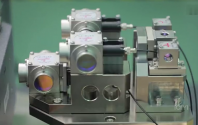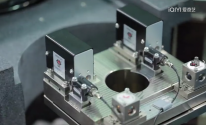28nm rated means it can only handle 28nm for minimum configuration. Shouldn't use that for lower node manufacturering.
Let's not make this overly complicated. They used 28nm in their original language so people know this is immersion scanner.
There is not such thing as a 28nm lithography machine, the best resolution with immersion I think is about 38nm. What information I have is that the plan is to have something closer to ASML NXT2000 immersion machine [good overlay and all that neat stuff] but I think the trial by fire for this new immersion machine will be in a 28nm process node, if can pass that then they will move on to more advance nodes.
so there is no question they are testing this out now (at least at SMIC & ICRD). ICRD uses it in 55nm process. I would imagine SMIC can try it either at 40 or 28nm. Whatever they try, doesn't really matter, since SMIC needs to add capacity in both
They have enough Arfi scanner stocked up for a while. It's not an issue. They can take their time to work with SMEE to get it ready for HVM. I don't think it really matters if SSA800 is ready today or a year from now. It will be ready in the next year in all likelihood.
The current US sanctions still do not prevent 1980Di from being exported to China for most of the fabs, so they should take advantage of that and stock up as many of these machines as possible.
SMIC is most likely blocked, so they are incentivized to get SSA800 working in their process.
But keep in mind that SMIC has stocked up many scanners and imported many in the past few months. They are not short on ASML scanners!
At this point, I'm not too excited about SSA800. I assume it will be ready for HVM at some point. If ASML is not allowed to sell to certain fabs in China, then SMEE will have the entire market to themselves.
The ones that we really are waiting on are:
1) de-americanized 14 and then 7nm process
2) EUV
3) DDR5 + HBM


